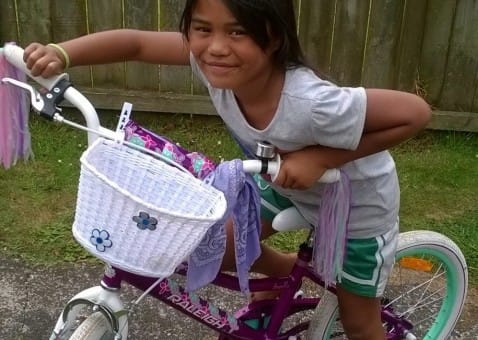In today’s workplace landscape, building a positive team culture is not just an aspiration; it’s a necessity. And one often overlooked but highly impactful way to foster such a team environment is through off-site conferences. These gatherings, when thoughtfully planned and executed, can be powerful catalysts for positive change within your organisation.
This is not about going through the motions or simply filling up an itinerary. It’s about using a strategic framework to plan your next offsite to create a lasting impact on your workplace culture. Whether you’re an experienced manager looking for a fresh approach or a first-time team leader eager to make an impact, this article will provide you with a clear path forward.
Before we deep dive into actionable strategies, let’s revisit the theory that has underpinned our approach to building positive team cultures. Throughout our 30-year journey, we’ve discovered that creating a thriving team culture isn’t about quick fixes or one-off initiatives. It’s about consistently nurturing three fundamental elements that we’ve come to call the 3 E’s: Education, Engagement, and Environment.
This framework isn’t restricted to daily business operations; it extends across the entire employee experience, from onboarding to retention. And yes, it plays a pivotal role in what we identify as the development phase.
The development phase of the employee lifecycle concentrates on facilitating both professional and personal growth of employees. This is achieved through training, mentorship, team workshops, and of course, team conferences.
Ready to transform your team’s culture and elevate their performance? Let’s get started.
Setting the Stage
Before we explore the 3 E’s, it’s crucial to lay the groundwork for your off-site conference. This stage is about defining the parameters of your event and aligning your planning with the broader objectives of your organisation. Grab a notepad or open a new document and get ready to jot down some key considerations:
Objectives: Start by identifying what you want to achieve with this conference. Do you aim to improve team cohesion? Foster innovation? Communicate a new company vision? Having clear objectives will guide all your subsequent decisions.
Company Values: Your conference is a reflection of your organisation. Ensure it embodies your company values. If innovation is a core value, you might incorporate brainstorming sessions. If social responsibility is important, consider a Charity team building event.
Target Audience: The key to delivering an impactful conference or offsite is understanding your audience. Attendees come with diverse backgrounds, learning styles, and expectations. Consider generational gaps, cultural differences, industry-specific knowledge, and varying levels of expertise. By tailoring your content and delivery to meet these diverse needs, you can ensure a more inclusive, engaging, and ultimately successful conference.
Budget: Be clear on how much you can spend. This will influence your choice of venue, speakers, activities, and more. Remember, an impactful conference doesn’t have to break the bank. It’s about thoughtful planning and execution.
Duration: How long will your conference be? A single day? A whole week? The duration will impact your agenda, accommodation needs, and attendee availability.
Past Experiences: Reflect on previous conferences. What worked well? What didn’t? Use these insights to inform your planning.
Take your time to think through each of these elements. They form the foundation upon which you’ll build your conference and ultimately drive the success of your event.

Education:
Education has evolved from being a one-way street to a multi-lane highway of engaging experiences. It’s not just about ticking off CPD points or going through the motions anymore. It’s about lighting that spark, creating those ‘aha!’ moments that make your conference truly unforgettable.
- Dynamic Delivery Styles: The delivery style of your educational content can greatly influence its impact. Traditional lectures have their place, but consider mixing it up with interactive workshops, panel discussions, or even storytelling sessions. Different styles cater to different learning preferences and can keep attendees engaged throughout the conference.
- Inspiring Guest Speakers: Inviting guest speakers who align with your company’s values and objectives can bring fresh perspectives and inspiration. These could be industry experts, thought leaders, or even motivational speakers. Their stories and insights can spark new ideas and stimulate thoughtful dialogue among attendees.
- Team Workshops: Team workshops provide a chance for hands-on learning and collaboration. They’re the perfect setting for real-time problem-solving and innovation, fostering a sense of camaraderie and shared achievement.
- Bite-Sized Learning: In this era of information overload, less is more. Bite sized learning is the process of delivering key information in manageable chunks, making it easier for attendees to absorb and retain the knowledge. These can be interspersed throughout the conference to keep energy levels high and minds engaged.
- Well-being: Balance out the professional development with sessions on mental health, stress management, and work-life balance. Show your team you care about their well-being, not just their productivity.
- Resources for Continuous Learning: Extend the learning journey beyond the conference with resources like books, online courses, or webinars. This encourages continuous learning and allows attendees to delve deeper into topics of interest at their own pace.
Strive for a balance between professional development and personal growth, hard skills and human skills, industry-specific knowledge and broader business acumen. This diverse mix of content can cater to the varied interests and needs of your attendees, making the conference more appealing and valuable to all.
%
of employees report learning and development opportunities would help them feel more engaged on the job.

Environment
The environment, both physical and psychological, is a vital aspect that can significantly influence the effectiveness of a conference. It’s not just about the aesthetic appeal but also how it fosters an atmosphere conducive to learning, engagement, and interaction.
Physical Environment:
The physical environment sets the stage for the conference, impacting attendees’ focus, engagement, and overall experience. Here are some tips for creating a physical environment that fosters learning and interaction:
- Choose an Accessible Location: Select a location that’s easy to reach for most participants. This reduces travel-related stress and allows attendees to focus on the conference content.
- Consider Space Layout: The layout should foster interaction and collaboration. A flexible space with movable furniture allows for different seating arrangements facilitating both group discussions and individual reflections.
- Incorporate Natural Elements: Studies indicate that exposure to nature enhances creativity and reduces stress. Consider venues with outdoor spaces to boost creativity and productivity.
- Lighting and Acoustics Matter: Proper lighting can improve mood and energy levels, while good acoustics ensure clear communication.
- Fun Setups: Consider including fun elements like bean bags, hammocks, or swing chairs. These can create a relaxed atmosphere that promotes creative thinking.
- Collaboration Zones: Create designated areas for group discussions and brainstorming sessions. These zones foster collaboration and idea sharing.
- Venues with a Twist: Consider non-traditional venues like art galleries, rooftop gardens, or even boats. These unique environments can stimulate moments of elevation and make the conference more memorable.
Psychological Safety:
Creating a psychologically safe environment is equally as important as the physical environment. Here are some tips:
- Set the Scene for Collaboration: Start by emphasising the value of each participant’s input and encourage everyone to contribute their ideas and experiences.
- Establish Ground Rules: At the beginning of the conference, establish rules that promote respect for all ideas and encourage open discussion. This sets a positive tone and ensures everyone feels comfortable sharing their thoughts.
- Encourage Participation: Actively involve attendees in discussions and decision-making processes. This not only enhances their sense of belonging but also enriches the collective knowledge of the group.
- Choose the Right Facilitator: A skilled facilitator can guide the conversation, address conflicts, and ensure that everyone’s voice is heard. They play a crucial role in promoting psychological safety.

Engagement:
The combination of a robust educational focus and a nurturing environment paves the way for our third ‘E’ – Engagement. This is where the magic truly happens. Engagement breathes life into the conference, transforming a room full of individuals into a dynamic, interconnected team.
Engagement is more than mere participation; it’s about fostering a sense of value, connection, and commitment among attendees. According to Gallup’s State of the Global Workplace report, teams with high employee engagement rates are 21% more productive.
Here are some strategies to amplify engagement at your conference:
- Team Building Exercises: Activities that challenge and stimulate can significantly boost team connection. Research suggests that team building can improve overall work performance by up to 20%.
- Charity Team Building: Activities that combine team-building with a philanthropic twist can instil a profound sense of purpose and camaraderie. Plus, they provide an opportunity to give back to the community, which can enhance corporate social responsibility. It’s a win-win.
- Networking Opportunities: Connections are the lifeblood of any thriving organisation. Facilitating networking opportunities can lead to fruitful collaborations, innovative ideas, and stronger relationships.
- Breakout Sessions: Choice is a powerful motivator. Offering breakout sessions that attendees can select based on their interests can increase engagement levels and cater to diverse learning preferences.
- Play Time: Incorporating elements of fun and relaxation can have a tremendous impact on engagement. It boosts morale, motivation, creativity, productivity, profitability, and overall happiness. When we play, we’re not just having fun, we’re lighting up our brains, releasing mood-boosting endorphins, and enhancing our problem-solving skills.
Indeed, planning a conference is no small feat. But remember, it’s more than an event – it’s a platform for growth, learning, and connection. As you approach your next conference, consider the power of education, environment, and engagement. These elements can transform your conference from a simple gathering to a compelling experience that motivates, inspires, and unites. So, step forward with confidence, knowing that you have the tools to create an impactful, memorable conference.





Recent Comments